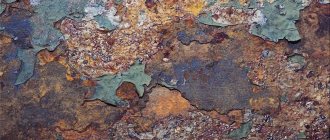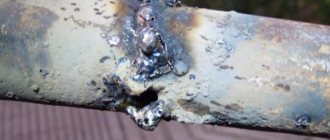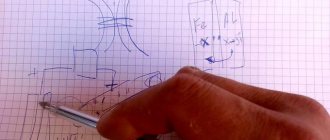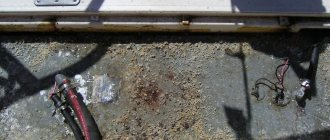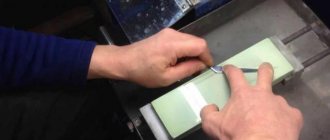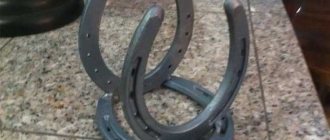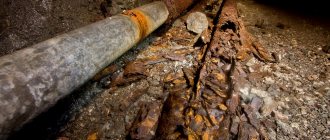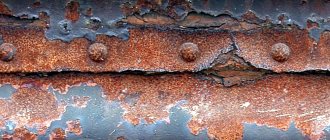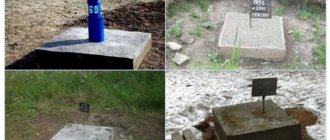White galvanizing
Home / White galvanizing
Galvanic galvanizing produces a particularly precise and smooth coating of the metal surface. This galvanizing method involves applying a coating (zinc) under electrochemical action. It is suitable for both electrically conductive and non-electrically conductive materials.
With the galvanic galvanizing method, deposited coatings of precise size obtain a uniform, shiny and decorative appearance. The adhesion of galvanic coatings is ensured by molecular forces during the interaction of zinc molecules and the base metal. Since the strength of this interaction is influenced by the presence of any films (greasy or oxide) on the surface of the coated products, which cannot be completely avoided during mass production, the thickness of galvanic coatings is usually not exceeds 20-30 microns. Today, galvanizing is the most effective and cost-effective method for preserving metal parts and structures by means of galvanization. This type of metal processing will ensure the durability of the product for 20 - 30 years, which will be much more economical compared to the constant replacement of certain parts. Since rolled metal has firmly entered almost every branch of human production, this type of material is so popular due to its functionality: strength, flexibility, durability ost, etc. However, it has been proven that metal is susceptible to the influence of gases and the atmosphere. Therefore, you have to think about coverage and protection. Galvanizing also allows you to increase the life of building structures when pouring metal with concrete up to 50 years. Different galvanizing methods correspond to different tasks. For example, galvanizing is suitable for galvanizing mesh of any scale, hardware, fasteners and many other rolled metal products. The peculiarity of this type of processing is to obtain the best appearance, and at the same time it does not replace the shape and size. The thickness of the coating layer of zinc ranges from 10 to 25 microns. During galvanic galvanizing , the metal can have three shades: matte, rainbow and blue. This method is notable for the fact that it does not leave marks or stains on the material, and also has the ability to penetrate inside the product, which is impossible when using other methods. Another type of galvanizing of metal is hot-dip galvanizing, which differs from other methods in that it makes the processing less expensive, since manual labor is used when loading products , and in the process only one product can be used, which makes the process more profitable. The procedure takes place in several stages - the first of them are cleaning and degreasing, and then the coating itself.
Galvanizing metal not only protects products from the effects of the external environment, but also from the effects of mechanical damage, preventing cracks on the surface of the product. Also, when using the latest technologies, which have been successfully used in Europe for a long time, galvanizing can be used for decorating products. In this case, the technology of applying zinc to the surface of the product in an airless environment is used, and during oxidation, a pattern appears on the product. Today there are many types of galvanizing for various needs, and once you find the right one, you will not regret your choice, because galvanizing is a reliable processing method and will serve you for a long time.
Examples of white galvanizing:
Photo of galvanizing in our workshop
Application area:
- thin-walled pipes
- small parts
- fasteners
- hardware
- steel mesh.
This galvanizing method does not leave behind “icicles” or streaks, which is what happens in the case of hot-dip galvanizing. It also eliminates the presence of roughness and dark gray (dirty) color of the products. Galvanization makes it possible to apply zinc inside products, which is impossible in the case of the thermal diffusion galvanizing method.
Electrochemical galvanizing
Today, there are several ways to apply zinc to a steel surface. But the most economical and rational is electrochemical galvanizing. The process of applying zinc to a metal surface using the galvanic method consists of several operations:
- surface preparation. Before starting the electrochemical process, the parts must be degreased and washed;
- etching products in a bath with a solution of hydrochloric acid allows you to remove heavy dirt, rust, scale and salts;
- In a bath with an electrolyte solution, zinc is directly deposited as a result of an electrochemical reaction. Prepared parts and zinc plates are immersed in a solution through which an electric current passes. As a result, zinc dissolves and settles on the workpieces;
- nitric acid makes the product lighter and also removes oxide films. after this operation it is necessary to perform additional washing;
- passivation is necessary to give the zinc layer additional strength and corrosion resistance. Various chemical compositions can be used for this process, which also affect the final color of the finished coating.
The final stage of the galvanic process is additional washing and final drying of the finished products. Zinc-coated parts are dried on special drying tables using industrial hair dryers. The zinc coating can be white or yellow. The galvanic processes in both cases proceed in the same way, but to obtain a yellow color it is necessary to increase the passivation time.
Advantages of galvanic galvanizing
The main advantage of the electrochemical method of applying zinc is the ability to accurately maintain the thickness of the applied layer. The finished coating is smoother and more beautiful, without smudges or streaks, and the product retains its shape and original dimensions. Parts of different shapes and dimensions can be subjected to galvanic galvanizing. Galvanized plugs, flanges and even elliptical heads will last much longer. Using this method, it is possible to apply zinc even to the most inaccessible places, including even the smallest holes and pores. After the product is dried, it can be sent to a finished product warehouse or assembly shop, since it does not require additional processing. If painting is done, it is solely for decorative purposes. To obtain a durable protective coating of zinc with high adhesion, you should carefully prepare the surfaces before galvanizing, and also ensure that all technological processes are followed.
Bright galvanizing
«HIGH GALVANIZED
» used for applying bright zinc coatings to steel, stainless steel. steel, cast iron, copper, bronze, aluminum, etc. The most common is zinc coating of iron and steel parts, because Being less electronegative, zinc begins to corrode first, thereby, as if sacrificing itself in favor of steel, and perfectly protects steel from corrosion.
Surface preparation
Despite the fact that zinc is primarily a protective coating and high demands are rarely placed on its appearance, zinc coatings made from this electrolyte are light and shiny. Therefore, when polishing a part before applying zinc coating, you can get a part with very high decorative properties.
It is also important to remember that, as with many other electroplating processes, surface preparation is one of the most important steps in metal plating. To do this, parts after mechanical preparation must first be chemically processed. reagent "UNIVERSAL CLEANER"
and then in the
ACTIVATOR
(see “Surface Preparation”). During surface preparation processes, special attention must be paid to washing. If the surface is washed poorly, an oxide film may form on the part, which will worsen the adhesion and quality of metal coating deposition.
Galvanic galvanizing
The part is connected to the negative pole of the current source, and the copper anode to the positive pole. The part is suspended in a container with electrolyte using conductive bare copper wire. Anodes must be placed evenly around the part. The ratio of anode area to cathode area must be maintained as 2:1. To reduce contamination of the electrolyte, the anodes must be placed in covers made of polypropylene fabric.
All transition contacts, current-carrying wires, terminals must be well cleaned
Process parameters
| Solution temperature | 18-32°C |
| Mixing the solution | Yes |
| Time of processing | 15-60 min |
| Anode | zinc |
| Protective cover for anode | Yes |
| Current Density | 0.8 – 5.0 A/dm2 |
After coating, the part must be washed and dried immediately (unless there is a subsequent passivation operation after this).
Problems and ways to resolve them.
| Defect | Cause of defect | Remedy |
| Increased pH value | Adjust pH | |
| The electrolyte is contaminated with mechanical impurities | Filter the electrolyte | |
| Dark sediment | Too high concentration of zinc ions | Replace some anodes with insoluble ones (stainless steel anodes) |
| Coating is rough | The electrolyte temperature is too high | Reduce the solution temperature to working temperature |
| Accumulation of iron ions in solution | Work the electrolyte at a current density of 0.2-0.3 A/dm2 | |
| The recesses are poorly covered | ||
| Dark gray finish |
Additional coating treatment
After galvanizing the surface of a part, passivation solutions are used to obtain higher corrosion resistance and give the surface high decorative qualities.
- Composition "BLUE-RIBDISH PASSIVATION OF ZINC"
- Composition “OLIVE ZINC PASSIVATION”
- Composition “RAINBOW ZINC PASSIVATION”
- Composition “BLACK ZINC PASSIVATION”
To do this, after thorough washing, immediately (without drying) the part is immersed in the appropriate solution.
Composition “BLUE-IRAINBOW ZINC PASSIVATION”
| Main characteristics | |
| Tank type | Standard |
| Electrolyte temperature | 18-30°C |
| Stirring the electrolyte | No |
| Time of processing | 10-30sec |
| Hood | Yes |
Composition “OLIVE ZINC PASSIVATION”
| Main characteristics | |
| Tank type | Standard |
| Electrolyte temperature | 18-25°C |
| Stirring the electrolyte | No |
| Time of processing | 20-65sec |
| Hood | Yes |
| pH value | 1,5-2,0 |
Composition “RAINBOW ZINC PASSIVATION”
| Main characteristics | |
| Tank type | Standard |
| Electrolyte temperature | 18-30°C |
| Stirring the electrolyte | No |
| Time of processing | 30-120sec |
| Hood | Yes |
Composition “BLACK ZINC PASSIVATION”
| Main characteristics | |
| Tank type | Standard |
| Electrolyte temperature | 18-30°C |
| Stirring the electrolyte | No |
| Time of processing | 25-35min |
| Hood | Yes |
After the passivation process, the part must be thoroughly washed and dried. After the passivation (chromation) process, the part should not be heated above 70°C.
